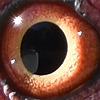HOME | DD
 TheBootesArtVoid — Juvenile Red Wattlebird (Wild)
TheBootesArtVoid — Juvenile Red Wattlebird (Wild)

#australia #australian #australiananimals #australianwildlife #bird #birds #natural #nature #naturephotography #photo #photography #photographyanimals #photographynature #photographyphoto #photos #wattlebird #wildlifeart #wildlifephotography #birdphotography #wattlebirds #wildlifereferencephoto #thebootesartvoid
Published: 2022-03-05 06:11:48 +0000 UTC; Views: 2689; Favourites: 103; Downloads: 0
Redirect to original
Description
Species Name: Red Wattlebird
Species Latin Name: Anthochaera carunculata
Similar species:
Little Wattlebird (Anthochaera chrysoptera)
Yellow Wattlebird (Anthochaera paradoxa)
Subspecies and locations:
Anthochaera carunculata carunculata – located in Victoria, eastern New South Wales, and southeastern Queensland.
Anthochaera carunculata clelandi – located in Kangaroo Island
Anthochaera carunculata woodwardi – loacted in the southwest and south-central Austrlaia
Native To: Australia
Habitats:
Can be found in eucalypt forests, woodlands, scrubs in the mallee regions, coastal scrubs, heaths, orchards, golf courses, parks, and gardens.
Size (length): 330 – 360 mm (13.0 – 14.2 inches)
Wing span: 148 – 194 mm (5.8 – 7.6 inches)
Bill size: 30.5 – 36 mm (1.2 – 1.4 inches)
Weight: 104 – 210 grams (3.7 – 7.4 ounces)
Group size: These birds can be solitary or form small groups. During breeding season they'll usually be in solitary pairs.
Diet:
Red Wattlebirds are primarily nectar feeders, they will usually be found in trees probing flower-heads with its bill and will rarely look for food on the ground. They will prefer to feed on plants where they produce lots of nectar and have easy access to said nectar. In addition to taking in nectar these birds will also eat insects and other small creatures, they will also feed on berries and other fruit. These birds are known to drive out species such as Noisy Friarbirds (Philemon corniculatus) but will forage alongside other birds such as the below:
New Holland Honeyeater (Phylidonyris novaehollandiea)
Little Friarbirds (Phylidonyris citreogularis)
Western Wattlebirds (Anthochaera lunulata)
Little Wattlebirds (Anthochaera chrysoptera)
Rainbow Lorikeets (Trichoglossus moluccanus)
Purple-crowned Lorikeets (Glossopsitta porphyrocephala)
Satin Bowerbirds (Ptilonorhynchus violaceus)
Pied Currwaongs (Strepera graculina)
Crimson Rosellas (Platycercus elegans)
These birds will tend to get rather territorial when there is a concentrated source of nectar and will drive off smaller honeyeaters from this source of nectar. This territorial behaviour is more prominent when food is scarce but much less common when there is an abundance of food in the general area.
Lifestyle: Terrestrial
Lifespan: 3 – 15 years
Migration Behaviour: Partial migrant, altitudinal migrant
Voice:
These birds have a hacking cough like 'yak', 'yakayak', or 'yaak, yakyak' call. They have a deep mellow ringing 'tew-tew-tew-tew' call. These birds will have a single emphatic 'chock!' as an alarm call. Generally these birds will have loud, harsh and varied calls. They are capable of mimicking other bird species.
Mating Behaviour:
Red Wattlebirds will generally nest as solitary pairs and may form long-term pair bonds. The eggs will normally be incubated by both parents but there are cases where only the female incubates the eggs. Usually the hatchlings will be brooded after by the female but there are cases where the male will also brood after the chicks. The chicks will be fed by both parents and will also be occassionally fed by immature Red Wattle birds.
Reproductive Season: July – November, may breed outside of these months if conditions are favourable
Nest Description:
Nest will be an untidy saucer/bowl made of sticks,m leaves, and grass. Nest will be lined with brk strips, fur, and hair. Nest will usually be hidden among dense foliage. These birds will generally prefer to nest in Manna Gum (Eucalyptus viminalis) and Apple Box (Eucalyptus bridgesiana).
Eggs Per Clutch: 2 – 3 eggs
Egg Description: Pale pink to red-buff in colouration, will have red-brown to reddish purple spots.
Egg Size: 33 x 22 mm (1.3 x 0.9 inches)
Incubation Period: 16 – 21 days
Fledge date: 30 days
Sexual Maturity: 1 year
Scientific Classification:
Domain: Eukaryota
Kingdom: Animalia
Phylum: Chordata
Class: Aves
Order: Passeriformes
Family: Meliphagidae
Genus: Anthochaera
Population Trend: Stable
Conservation Status: Least concern
Potential threats and conservation:
Currently these birds population are stable across its range. Major threats include habitat loss and fragmentation as well as predation from domestic cats.
Further Reading (general information):
Wikipedia: en.wikipedia.org/wiki/Red_watt…
Birdlife: birdlife.org.au/bird-profiles/…
Birds in Backyards: www.birdsinbackyards.net/speci…
Austrlaian Museum: australian.museum/learn/animal…
Ebird: ebird.org/species/redwat1?site…
Backyard Buddies: backyardbuddies.org.au/backyar…
Birdfact: birdfact.com/birds/red-wattleb…
Animalia: animalia.bio/red-wattlebird
Book References:
The Australian Bird Guide Revised Edition published by CSIRO Publishing
Birds of Australia published by DK Nature Guide
The Field Guide to the Birds of Australia published by Harper Collins
The Slater Field Guide To Australian Birds Second Edition by Peter Slater, Pat Slater, and Raoul Slater
Related content
Comments: 6

👍: 1 ⏩: 1

👍: 0 ⏩: 0

👍: 1 ⏩: 1

👍: 1 ⏩: 0

👍: 1 ⏩: 1

👍: 0 ⏩: 0


























